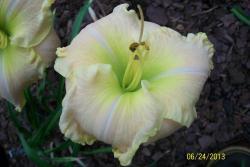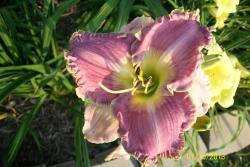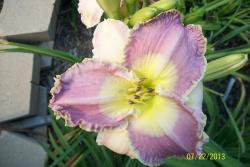Oh, aphids ... don't start me about aphids! LOL

I do believe they like warmth, and they like it even better when the warmth is also a bit humid. As for getting rid of them ... mine seemed to have come in with a particular shipment (had never had them before) and have never left. By now I am resigned to the fact that having daylilies, and bringing in new varieties as I am helpless to stop doing, means I will learn to live with, and battle, aphids. Spraying them off or hand-removing, for me, means only a few hours before they are right back at it again. I've used the soapy water method to strip the outer shells and that has helped reduce the number of them.
But, they have a life cycle that is hard to interrupt. When you see the live little bugs, those are immature nymphs, and they will keep getting back to the plants unless they are killed. When you see the "popcorn-husk" form sprinkled on the leaves, they have already eaten, shed their shell, and turned into mature flying aphids.
Those adult flying aphids set microscopic eggs on garden foliage and, so, the cycle begins anew. The eggs can winter over, so even when it seems they hav been "frozen out" they will re-appear when it gets warm enough. From then on, every few weeks, there may be a new outbreak of the ones we see most easily, the nymphs.
I'm going to try this year to get ahold of some "aphid-repelling" plants to be companions. Supposedly they do not like "smelly" plants: onions, society garlic, etc. Also, I will try the advice to just constantly try to monitor when the nymphs are around, kill them off with soapy water, and try to derail most of them from getting to the adult egg-laying stage. Lastly, ladybugs can eat a lot of them, but it can be tricky to really get ladybugs to make a home in the garden. They need water and food (soft but dried fruit, like raisins, has been recommended). And, normally you can only buy hundreds of ladybugs at a time. I'm not able to feel comfortable about keeping most of them in the fridge and letting them out in small batches ... but that is mentioned as an option for maximizing their placement.
They do a _ton_ of damage eating away at the tender part of my daylilies. SIGH!

 Quartz Rainbow
Quartz Rainbow
 Lavender Heartthrob
Lavender Heartthrob L H
L H L H color and form varies at times.
L H color and form varies at times.